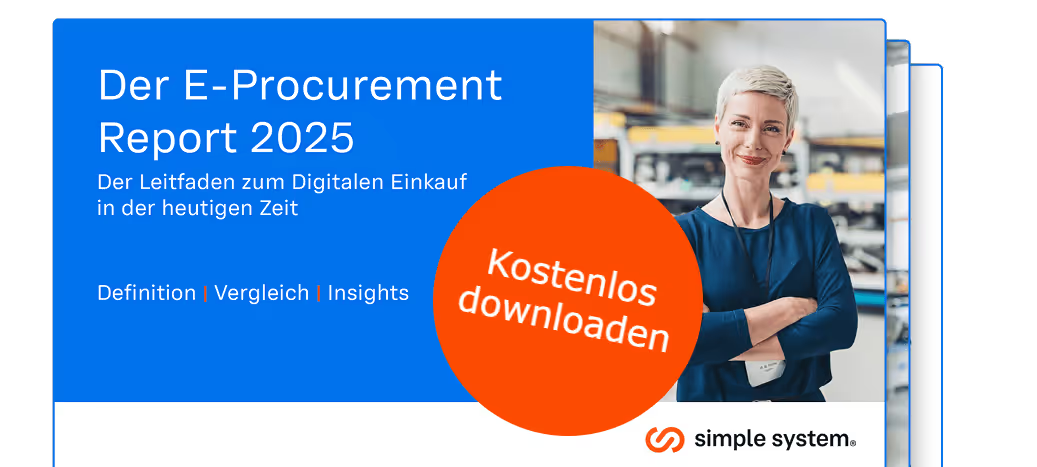Various tasks shape the field of procurement logistics, including strategic supplier selection, order processing, implementation of e-procurement systems and optimization of the entire material flow. Particular attention is paid to a smooth process from receipt of order to physical acceptance of goods upon receipt of goods.
Merging Procurement and Logistics — Procurement Logistics
Procurement logistics is an indispensable part of overall logistics management and focuses on the efficient organization and control of all processes. In contrast to distribution logistics, which covers the flow of goods from the warehouse to the end customer, procurement logistics focuses on the opposite path — from suppliers to goods receipt by the company.
Procurement logistics tasks

- production logistics
Production logistics is a central part of the supply chain. It includes the efficient planning and control of all material flows required for production. The aim is to provide the right materials in the right quantity and quality at the optimal time. It not only helps to reduce costs, but also to increase production speed and quality. - Receipt of goods
The smooth receipt of goods is always a critical point: This is where the delivered goods are physically taken over. Efficient warehouse logistics and product testing not only guarantee product quality, but also cost minimization and reduction of delays in the production process. Technological solutions such as automated identification systems significantly improve the accuracy and speed of goods receipt. - competitiveness
Procurement directly influences a company's competitiveness. By optimizing procurement processes, costs can be reduced, delivery times reduced and flexibility increased. A strategically oriented Procurement management enables companies to react quickly to volatile market demands and gain a competitive advantage. - ordering
The efficient processing of ordering processes is a central component of procurement logistics. By using modern IT systems and electronic procurement platforms, orders can be automated and made transparent. This not only reduces errors, but also enables a better negotiating position with suppliers. Optimized order processing therefore makes a significant contribution to reducing costs and saving resources. - Goods and consumables
The provision of goods and supplies is a crucial aspect: The selection of reliable suppliers, compliance with quality standards and ensuring the continuity of the supply chain are of central importance. Careful planning and monitoring of (indirect) procurement of goods and supplies ensure not only the availability but also the quality of raw materials for production.
Objectives of procurement logistics

- profitability
By using resources efficiently and minimizing storage costs, good procurement logistics significantly contributes to increasing the profitability at. As an optimized sub-area of logistics, the procurement process enables companies to use their financial resources more effectively and thus strengthen their corporate goals and competitive position. - Maintaining competitiveness
The competitiveness of a company depends decisively on effective logistics. Procuring materials on time and reducing delivery times are key factors for standing your ground in a dynamic market environment. A well-thought-out procurement strategy enables companies to react flexibly to market requirements and thus maintain their competitiveness. - Inventory optimization
Optimizing inventory is another important goal. By continuously monitoring and adjusting inventory, bottlenecks can be avoided and overstocks reduced. Precise inventory optimization not only minimizes costs, but also makes it possible to make the material flow efficient and thus improve the overall performance of the company. - Procurement of raw materials
The timely provision of raw materials is of central importance for a smooth production process. Procurement logistics aims to ensure that the required materials are available on time and in the right quantity. This not only helps to avoid production downtimes, but also enables efficient use of production capacities.
Key figures of procurement logistics

- Storage costs
Storage costs are an essential key figure that reflects the financial burden of warehousing. These include rental costs, personnel costs, insurance and other expenses resulting from warehousing. Effective cost management in this area makes a significant contribution to the profitability of the company. - ordering
The order key figure relates to the processing of procurement processes. Aspects such as order frequency, quantity and costs are analyzed here. Optimum order processing ensures not only the minimization of costs, but also the availability of materials. - Material availability
Material availability is a key indicator that measures the timely provision of required materials for the production process. High material availability minimizes downtime and ensures efficiency and continuity of production processes. - Determining delivery reliability
Delivery reliability provides information on the extent to which suppliers guarantee timely and complete deliveries. High delivery reliability minimizes uncertainties in the supply chain and helps to avoid bottlenecks and production downtime. - Turnover rate
The turnover rate measures how quickly inventories are handled on average. A high turnover rate indicates an efficient use of storage capacities and helps to reduce storage costs. At the same time, it enables faster adaptation to changing market requirements.
Procurement and logistics more effective through e-procurement

To survive in today's procurement market, you need to streamline your procurement and logistics management, make it efficient and effective. Here comes professional software into the game, which offers a wide range of features to optimize your processes and increase your success.
One of the key benefits of professional software is its ability to centralize and streamline procurement activities. From procurement and supplier management to contract negotiations and processing of orders, the software offers a Unified platform to manage all aspects of the procurement life cycle. This not only saves time and resources, but also improves transparency and control over your procurement processes and ensures compliance and cost savings.
In addition, professional software gives you real-time insights and reporting capabilities that enable you to track key performance indicators, monitor supplier performance, and identify areas for improvement. This data-driven approach enables you to make strategic decisions based on accurate information, resulting in higher productivity and profitability.
When it comes to compliance and risk management, our platform offers robust features that ensure compliance with regulations, standards, and best practices. From maintaining audit trails to enforcing approval workflows, the software provides the necessary controls to Mitigate risks and maintain the integrity of your procurement and logistics processes.
We would be happy to convince you of our platform live and show you the added value that will help your company move forward. Find out more now.

Einkaufen & sparen
Erfahren Sie, wie es geht, in unserem kostenlosen E-Procurement-Report. Jetzt kostenlos und unverbindlich herunterladen.
Jetzt lesen








